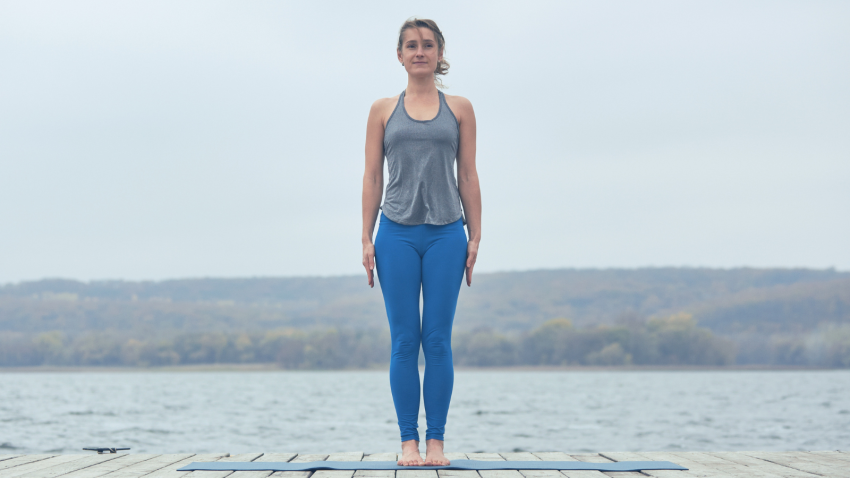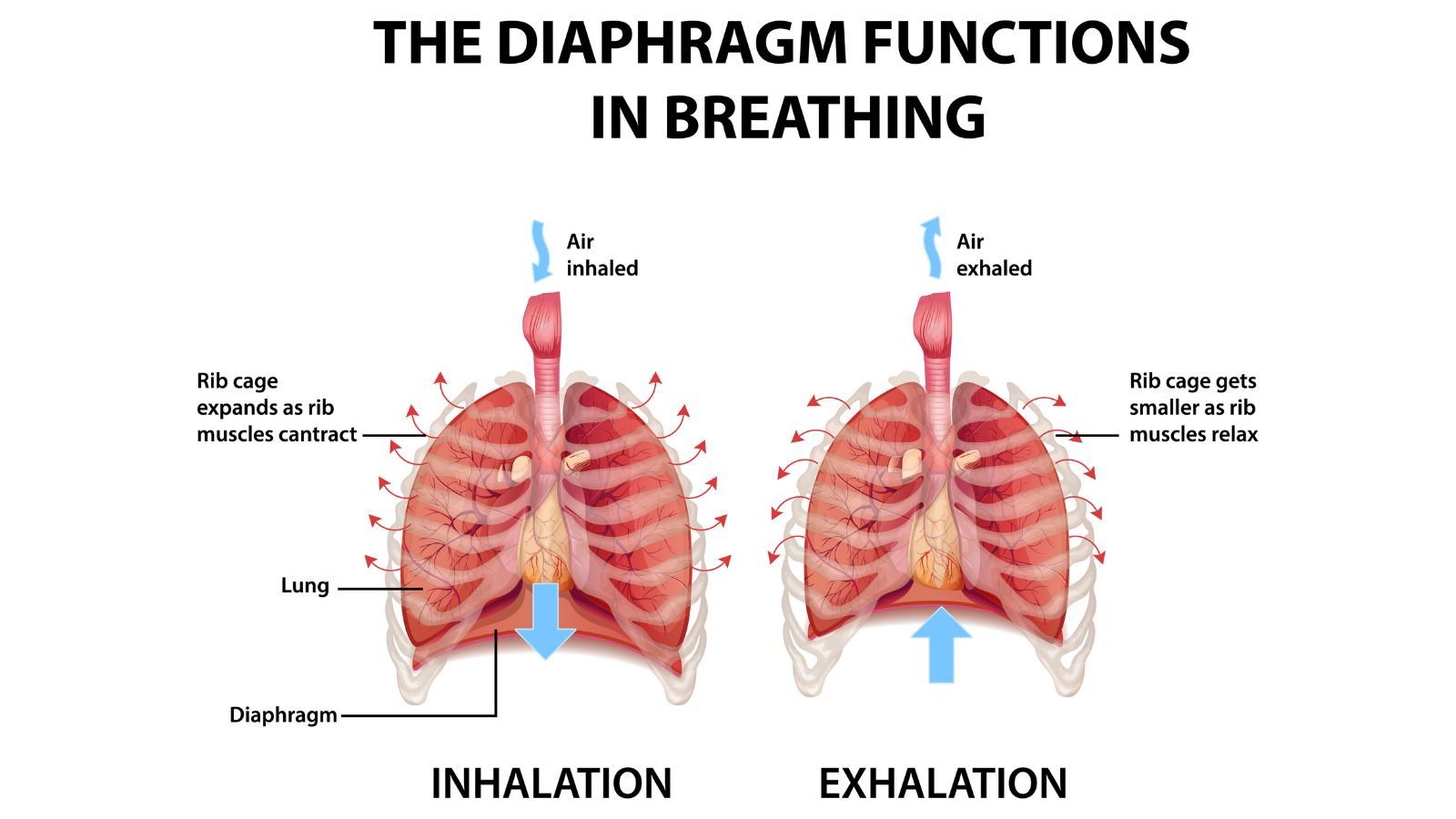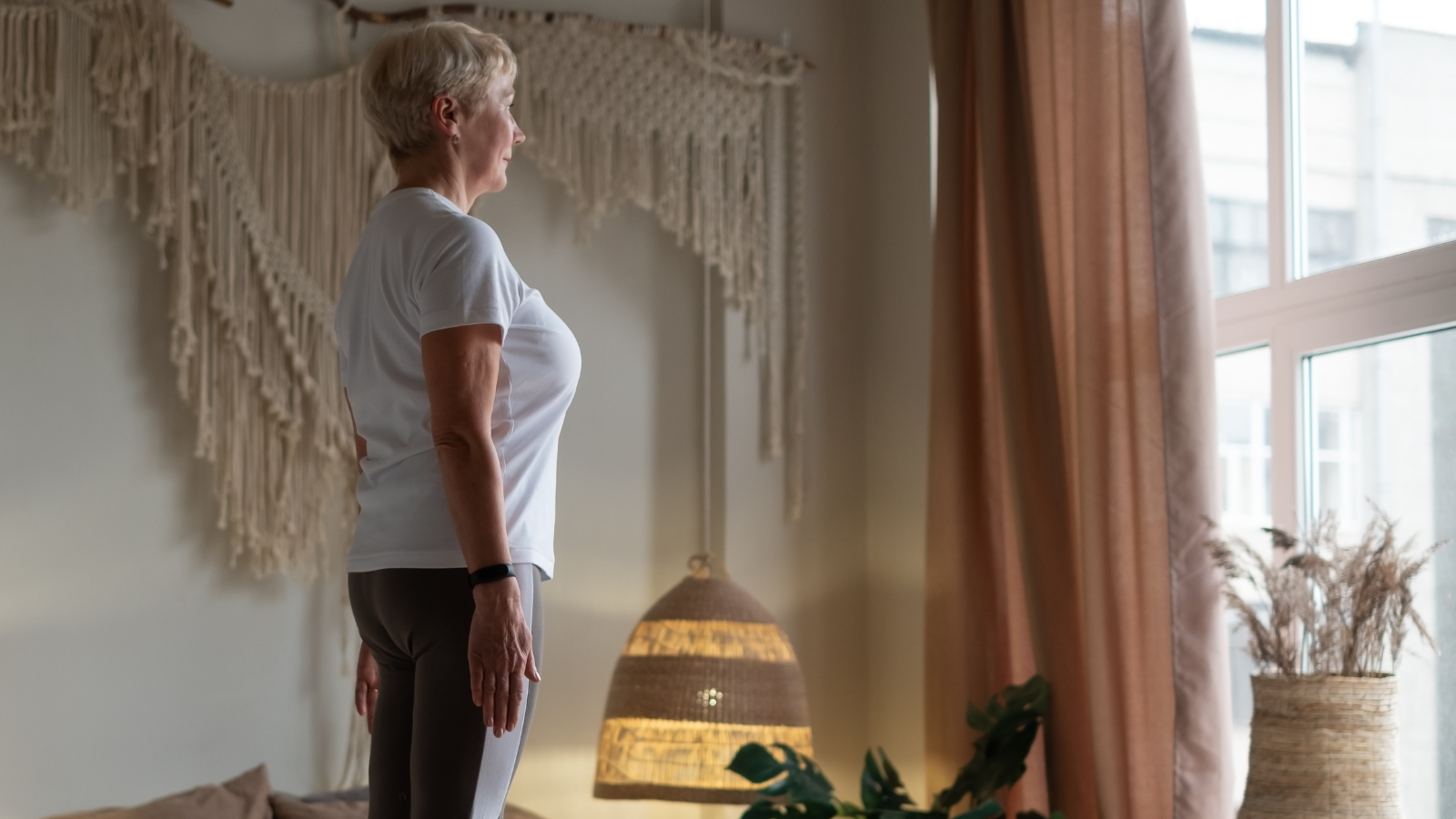View basket (0 items $0.00)
Error message
- Notice: unserialize(): Error at offset 5 of 154 bytes in variable_initialize() (line 1202 of /home/dh_6hcdc2/yogau.online/docroot/includes/bootstrap.inc).
- The file could not be created.
- The file could not be created.

Healthy Breathing and Posture: Connecting the Dots
In physical therapy school many years ago, they taught me to assess posture and treat associated muscle imbalances. If someone displayed forward-head posture, I assumed their posture caused their headaches. “I can help!” I thought. And I’d prescribe exercises to reduce their forward-head posture.
Sure, I considered lifestyle choices and other contributing factors, but my treatment approach always circled back to correcting posture. This approach wasn’t wrong, but it overlooked many factors we know contribute to pain and dysfunction—the nervous system, attitude, psychosocial factors, and breathing patterns.
Muscle balance and skeletal alignment are important for overall health. If you have pain, it makes sense to look at your posture and improve the imbalances that may be contributing to muscle strain. The way you sit or stand can make a difference in your comfort level and how you feel. But what if, no matter what you do, you still feel pain? What if the new chair, stand-up desk, or timer you set reminding you to take breaks doesn’t work?
You can’t separate yourself from your body parts.
Posture is Only One Factor
 As humans, we constantly move, think, feel, and adapt to our inner and outer environments. If you have pain because of the way you sit all day, you should make a simple change, and voila—no more pain. But it’s rarely that simple.
As humans, we constantly move, think, feel, and adapt to our inner and outer environments. If you have pain because of the way you sit all day, you should make a simple change, and voila—no more pain. But it’s rarely that simple.
Imbalances in mind and body take a while to present as pain, so they also take time to resolve.
Working at a desk all day will impact your body. If you spend prolonged periods of time in front of a computer, as many of us do, you’ll settle into a hunched position with your head and shoulders forward, and your spine in a flexed position.
Studies show that poor posture does not directly cause pain or dysfunction, but it is a contributing factor. You should take breaks to stretch, stand, and change positions so you don’t become fixed in a forward-head and rounded shoulder position. “The best posture is the next posture.” Simply moving regularly throughout the day into various positions can make a big difference in how you feel.
Once pain sets in, it may be too late. You may need to do more than just roll your shoulders and stretch your neck to make it go away.
The Nervous System is King
Our bodies move in patterns directed by our nervous systems. Even when sitting quietly at your desk, you have a plethora of activities going on simultaneously. You are digesting food, your heart is beating, and you are breathing and thinking. You have a balance of muscle activity maintaining your posture even when sitting still.
If you feel stressed, anxious, or dread work each day, your nervous system acknowledges this and does its job, increasing your heart and respiratory rate and tensing your muscles.
Stretching helps, but if your nervous system is on overdrive, you won’t be able to relax. Your body will be revved up until it’s convinced you are safe and can let go and breathe.
Healthy Breathing and the Nervous System
 The basics of reprogramming the nervous system start with healthy breathing. Learning how to breathe efficiently settles the fight-or-flight response that may predispose you to pain. If your breath is shallow, you overuse the small accessory muscles in your neck and shoulders which may trigger other stress responses in your body.
The basics of reprogramming the nervous system start with healthy breathing. Learning how to breathe efficiently settles the fight-or-flight response that may predispose you to pain. If your breath is shallow, you overuse the small accessory muscles in your neck and shoulders which may trigger other stress responses in your body.
Healthy breathing uses your diaphragm fully. Your inhalation should expand the rib cage in three dimensions barely perceptible to someone watching you. If your chest and shoulders move and down, and your neck muscles strain with each breath, it’s a sign that you are not effectively engaging your diaphragm.
Taking a deep breath should fully engage the diaphragm, pelvic floor, and other core muscles that help support your posture. A deeper breath (not necessarily a bigger breath) increases mobility of your rib cage and thorax and uses the deep core muscles around the belly and low back. As a result, your neck muscles are better able to relax and lengthen. Posture may improve naturally as your nervous system settles into a relaxed state, which indirectly reduces pain.
Healthy Breathing: It’s Not Just about Posture and Pain
 Your breath connects you to your state of mind. If you feel anxious or stressed, it will show in the rate and depth of your breath. Likewise, if your breath rate is fast for whatever reason (stress, biochemical changes, or other breathing pattern disorders) your nervous system will respond as if you are stressed, even if you don’t feel so mentally—yet.
Your breath connects you to your state of mind. If you feel anxious or stressed, it will show in the rate and depth of your breath. Likewise, if your breath rate is fast for whatever reason (stress, biochemical changes, or other breathing pattern disorders) your nervous system will respond as if you are stressed, even if you don’t feel so mentally—yet.
By focusing on healthy breathing, you tap into your mental state. You may not sense the connection at first (how you breathe influences how you feel), but with practice, you’ll notice patterns. Poor breathing patterns include hyperventilating, shallow breathing, irregular breathing, and paradoxical breathing.
When an inhalation pulls your belly in and chest out and an exhalation pushes your belly out—the opposite of normal—to name a few. Noticing faulty breathing patterns is the first step toward changing them.
If you live in static postures at your desk, at the computer, in the car, or on the couch and are now experiencing pain, it’s unlikely that you will change your patterns immediately. Patterns are habits and changing them takes effort and time.
Healthy Breathing
If changing the way you breathe to adopt a more efficient breathing pattern feels impossible, stick with it. So many of us have breathed poorly for so long, that we forget how to breathe well!
If after a couple of weeks of practice, you still struggle, consider working with a professional. If you have an underlying medical condition or have developed poor breathing patterns through the course of your lifetime, you may benefit from guidance, intervention or just a few tips to get started.
How to Inquire into Your Breathing Patterns
In the meantime, ask yourself the following questions:
-
How does your state of mind influence your muscle tone and ability to breathe? For example, when you’re frustrated or stressed, does your breath feel shallow or restricted? When your breath feels restricted, does this influence the tone in your muscles?
-
When you purposefully relax your neck and shoulders and soften your face, can you breathe with more ease? Can you soften your face and stay tense in your shoulders?
-
What happens to the speed of your thoughts when you slow down your breathing? Can slowing down your breathing improve your ability to focus?
-
Does your mood influence the way you breathe? Can you use healthy breathing to prevent yourself from making a bad day worse?
In a therapeutic setting, visualizations and questions are used to help clients sense how thoughts influence physiology and breath. Once you make a connection, changing or diverting unwanted patterns becomes possible.
Connecting the Dots: Breathing, Posture, and Pain
 Posture and muscle balance are important pieces of the overall picture of health, wellness, and the absence of pain, but they are not the only things that matter. Your emotions influence your breath. Your breath influences your nervous system.
Posture and muscle balance are important pieces of the overall picture of health, wellness, and the absence of pain, but they are not the only things that matter. Your emotions influence your breath. Your breath influences your nervous system.
And your nervous system will affect your posture over time. As you get better at connecting the dots between posture, pain, and breath you may get better at targeting what systems in your body, or areas in your life, need the most care or attention.
This is how change and recovery happen—from the inside out.
Reprinted with permission from Christine Carr/TwoRiversPhysicalTherapyandWellness.
 I’ve been a physical therapist for over 20 years. In my youth, I was constantly hurting myself. This motivated me to learn how to recover from injury and heal myself, naturally. I love to learn. Studying the human body, and mind and how they function together is exciting to me. I have a diverse academic background with experience that includes orthopedics, yoga, and functional medicine. I enjoy teaching others how to recover from injury, manage their condition, and improve their function and performance.
I’ve been a physical therapist for over 20 years. In my youth, I was constantly hurting myself. This motivated me to learn how to recover from injury and heal myself, naturally. I love to learn. Studying the human body, and mind and how they function together is exciting to me. I have a diverse academic background with experience that includes orthopedics, yoga, and functional medicine. I enjoy teaching others how to recover from injury, manage their condition, and improve their function and performance.
I enjoy any and all sports available in this beautiful area or kicking back with a good book in my spare time. I’ve recently started gardening, though I have much to learn!
Featured Courses









